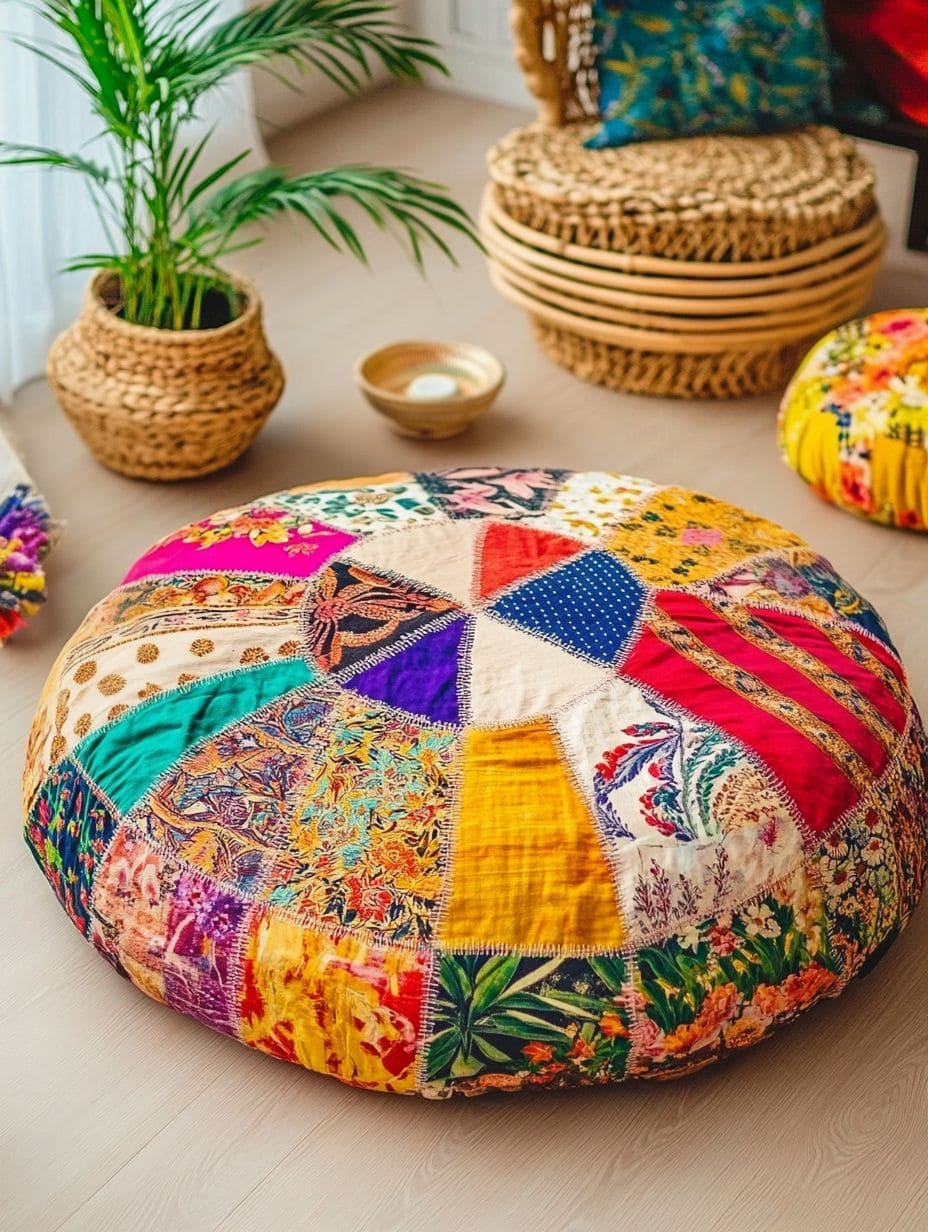
Every patch tells a tale. Maybe it’s from an old scarf, a thrifted sari, or a fabric scrap you couldn’t let go of.
When you stitch them together, they become more than cloth, they form a kaleidoscope of history, texture, and personality.
You can see a floor pillow like this doesn’t just serve as extra seating; it becomes the soul of a space.
The patchwork design feels like a festival frozen in fabric, a carnival of color waiting to welcome guests or cradle you with comfort.
Materials Needed
- A variety of fabric scraps (cotton, linen, silk, or recycled textiles in bright, contrasting patterns)
- Large piece of plain backing fabric (canvas, denim, or sturdy cotton)
- Thick batting or cushion filling (polyester fiberfill, shredded foam, or even old pillows)
- Sewing machine (or needle and strong thread if sewing by hand)
- Fabric scissors and pins
- Chalk or fabric marker
- Zipper or large buttons (optional)
Step-by-step Guide
Step 1: Decide the size of your floor pillow (usually 30-36 inches in diameter works well).
Then sketch a rough circle divided into wedges or geometric shapes like triangles, squares, or strips.
Plus, each section will be cut from a different scrap of fabric, giving the pillow its patchwork charm.
Step 2: Using your sketch as a template, cut fabric pieces to size. Don’t worry about perfect symmetry as slight variations add character.
Aim for bold contrasts: mix florals with stripes, solids with paisleys, and bright tones with earthy hues. Then leave a small seam allowance (½ inch) on each side for sewing.
Step 3: Start joining the fabric pieces, sewing them together edge by edge. You now press the seams flat with an iron as you go.
Continue until you have a large circular or square patchwork piece that will form the pillow’s top. It should look like a colorful quilt.
Step 4: Cut one large piece of sturdy fabric for the back panel.
If you want the cover to be removable, cut the backing in two halves and add a zipper or button closure along the seam. This makes cleaning much easier.
Step 5: Place the patchwork top and backing right sides facing each other.
Pin around the edges, then sew, leaving a small opening for turning and stuffing. You turn the cover right side out once sewn.
Step 6: Fill generously with fiberfill, shredded foam, or recycled pillow stuffing until it’s plump and supportive.
For a firmer cushion (great for floor seating), use layers of batting or even insert a round foam cushion.
Step 7: Hand-stitch the opening closed securely. If you’ve included a zipper or button, just close it up after inserting the cushion.
Tips:
If you’re a traveler, use fabric collected from different places, it turns your pillow into a living souvenir of your journeys.
I once made one with leftover sari silk and every guest who saw it wanted to sit on it first, it quickly became the favorite seat in the house!
